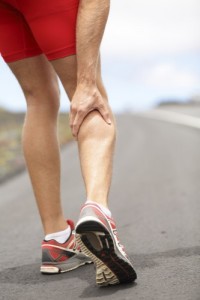In the sports world, many supplements come and go - some are food-based and others...not so much. A recent food-based player is beetroot juice or beetroot powder. Companies such as Beet Elite and Beet Boost sell powdered beetroot that can be mixed into water and taken like a shot 30-60 minutes before exercise. But what is beetroot juice, why all the hype and does it really improve performance?
Nitric Oxide
Beetroot juice or powder is a source of nitrate, which is converted into nitric oxide in the body. Nitric oxide regulates blood flow and muscle contraction within the body. Higher levels of nitric oxide equals more oxygen to flow to the muscles. This can be beneficial for athletes because better blood flow means better oxygen supply to working muscles, allowing the athlete to push harder for longer instead of hitting the wall too soon. However, beets are not the only food source of nitrates. Other vegetables considered high in nitrates (over 250 mg/100gm fresh weight) include celery, arugula, rhubarb, butterhead lettuce and spinach.
Wednesday, May 18, 2016
Friday, May 6, 2016
Runner’s Cramps: Why You Get Them and How You Can Prevent Them
Thanks to Jessica Bratko from Athletico for the interview and writing of today's blog post!
Most runners have experienced it: your run is going smoothly and you’re feeling great, then all of a sudden you succumb to the dreaded side stitch, calf cramp or that feeling of “having to go.” Muscle and stomach issues can stop a runner dead in their tracks. With varying spring temperatures, muscle cramps are more common, as there is little opportunity to adjust to the change in weather.
Even with all advances in modern science, the true cause of exercise-induced cramps is still widely misunderstood. Kate Davis, MS, RD, CSSD, LDN, consultant sports dietitian/nutritionist and owner of RDKate Sports Nutrition in Naperville, Illinois provides great insight regarding why cramps may occur while running. Kate has had numerous experiences working with institutions like the University of Michigan and Michigan State University, as well as the Olympic Training Center in Colorado Springs, CO and IMG Academy in Bradenton, FL. Check out what she had to say below to learn how to minimize, prevent, and act quickly when cramps occur.
Most runners have experienced it: your run is going smoothly and you’re feeling great, then all of a sudden you succumb to the dreaded side stitch, calf cramp or that feeling of “having to go.” Muscle and stomach issues can stop a runner dead in their tracks. With varying spring temperatures, muscle cramps are more common, as there is little opportunity to adjust to the change in weather.
Even with all advances in modern science, the true cause of exercise-induced cramps is still widely misunderstood. Kate Davis, MS, RD, CSSD, LDN, consultant sports dietitian/nutritionist and owner of RDKate Sports Nutrition in Naperville, Illinois provides great insight regarding why cramps may occur while running. Kate has had numerous experiences working with institutions like the University of Michigan and Michigan State University, as well as the Olympic Training Center in Colorado Springs, CO and IMG Academy in Bradenton, FL. Check out what she had to say below to learn how to minimize, prevent, and act quickly when cramps occur.
Subscribe to:
Comments (Atom)

